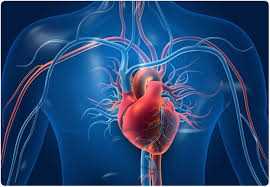This article challenges conventional science by redefining the human heart not merely as a circulatory pump, but as the first sensing, emotionally aware, and memory-storing organ of the body. Drawing on groundbreaking evidence from cardiology, neuroscience, and psychology, we explore how the heart:
Develops and functions before the brain
Sends afferent signals to the brain
Stores emotional and experiential memory
And possibly transfers memory through transplantation
In a time where reductionist views of the body dominate science, this article calls for an integrated and expanded model of human sensation and consciousness — with the heart at its center.
Introduction: Rethinking the Heart’s Role
For decades, science has taught us: The brain sees, hears, feels, remembers, and leads. But every human knows — we feel loss, love, excitement, and pain in the heart.
This is not poetic fiction — it is a biological and neuropsychological truth we’ve ignored.
This article proposes: The heart is the body’s true master sensing organ — the first to form, the first to function, the first to feel. It sends primary signals to the brain. It stores emotional memory. And it deserves a place at the center of medical, neurological, and emotional understanding.
2. The First to Form, The First to Function
At just 22 days post-conception, the heart begins to beat — even before the brain forms into its functional regions.
This means:
The heart functions independently of the brain
Its rhythm is generated by pacemaker cells (SA node)
It sets the foundation for life’s continuity
Reference: Moorman, A. F. M., & Christoffels, V. M. (2003). Cardiac chamber formation. Physiol Rev.
The heart is the original organ of life. Without its rhythm, there is no brain function, no sensation, no consciousness.
The Heart Senses First — The Brain Decodes
Contrary to popular belief, the brain is not the origin of sensation — it is the processor.
The heart contains ~40,000 neurons, forming an intrinsic cardiac nervous system — also known as the “heart brain.” These neurons:
Sense pressure, hormones, and internal states
Communicate with the brain via the vagus nerve
Regulate emotions and cognitive performance
Over 90% of vagus nerve fibers are afferent — carrying signals from heart to brain.
Reference: Armour, J. A. (1991). Intrathoracic neurons regulating the heart. Handbook of Physiology.
This completely reverses the model we were taught.
Sensation Precedes Movement: A New Scientific Sequence
Standard belief: Sensory input → Brain → Motor Output.
New model:
External stimulus is detected by a sensory organ
The heart receives and evaluates emotional relevance
Heart sends signals to the brain via the vagus nerve
The brain decodes the input
Brain controls movement as response
This proves the heart is the initial processing hub for sensation and emotional interpretation.
The Heart Feels What the Sense Organs Detect
Each sensory organ gathers input — but it is the heart that feels and makes it meaningful:
Eyes collect light — but the heart adds beauty and emotional color
Ears detect sound — but the heart interprets tone, meaning, and depth
Nose identifies smell — but the heart attaches comfort, danger, or nostalgia
Tongue experiences flavor — but the heart registers pleasure, disgust, or memory
Skin senses touch — but the heart feels warmth, safety, or threat
The brain reacts to these experiences — but the heart feels them. The heart is the master interpreter; the sense organs are just the tools.
The Heart Stores Emotional Memory
When we do anything with dilchaspi (deep interest or devotion), it’s not just understood — it’s felt, and stored in the heart.
Scientific evidence confirms:
The heart's electrical activity varies with emotional state
Heart Rate Variability (HRV) reflects psychological well-being
HeartMath research shows emotions regulate cardiac coherence
Reference: McCraty, R., Atkinson, M., & Tomasino, D. (2001). Science of the Heart. HeartMath Institute.
The heart stores emotional memory traces that last longer than logic-based facts. These memories are felt, not just remembered.
Heart Transplants & Memory Transfer: Cellular Memory Is Real
Strange but true — memory can transfer with a heart transplant. Cases include:
Case 1: A woman, post-transplant, began craving classical music — her donor’s passion.
Case 2: A child started dreaming about a murder that actually matched the trauma of her donor — her details led to solving the case.
Reference: Pearsall, P., Schwartz, G. E., & Russek, L. G. (2002). Personality changes after heart transplantation. JNDS.
These cannot be ignored or dismissed. They suggest that the heart holds fragments of personality and experience.
The Ultimate Proof Is Us — Humans
Science often demands proof — yet we live it every day:
You say: “My heart is broken,” not “my brain is broken.”
You feel love, betrayal, loss — in your chest, not your head.
Your heart races with fear, joy, or intimacy.
You instinctively clutch your chest in shock or grief.
These are not metaphors — these are biological events felt by every human.
The ultimate evidence? You. Every person. Every heartbeat.
A Unified View: Cardio-Neuro-Psychological Integration
This article is not emotional speculation — it’s a cross-disciplinary theory.
Radiology — SA node rhythm, heart neurons, HRV Neurology — vagus nerve afferents, heart-brain signaling Psychology — emotional memory, attention, trauma, transplant identity
Together they form a new model of sensation and memory, where:
The heart is primary
The brain is secondary, interpretive
Conclusion: The Heart is the Real Guide
The heart is: The first organ to form and function A sensor of emotional and physical signals A memory saver of what we love and fear A signal-giver to the brain The interpreter of our sensory world
Let us stop calling the heart just a pump.
It is a sensing, storing, and guiding organ — the silent master of human experience.
Email : daanishinterview@gmail.com
